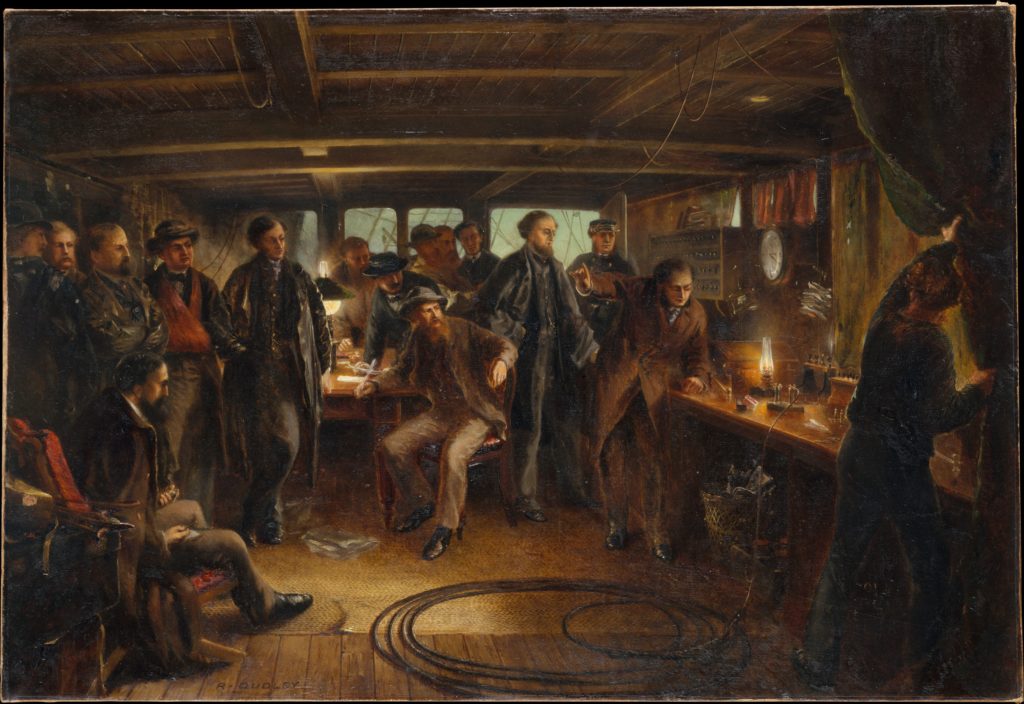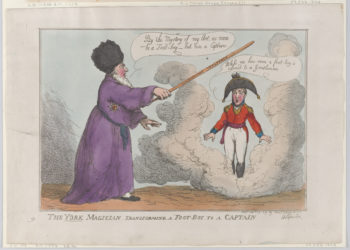Press releases announcing a new transformative agreement between a publisher and a library or library consortium hardly cause any notice these days. But, while read-and-publish agreements abound and have quickly settled into a predictable structure, the recently announced agreement between SAGE Publishing and UNC-Chapel Hill represents an interesting innovation. The agreement converts subscription spend to open access support at a cost-neutral level for the University Libraries but then combines that agreement with mechanisms for funder engagement as well as a “rebate” model that increases the value of funder spend for the University Libraries. Can a library/publisher agreement attract funder spend?

The SAGE/UNC-Chapel Hill Agreement
“Publisher X and library Y today announce…” These sorts of statements flow into my inbox on a regular basis and I’ll admit that they are typically deleted after a cursory glance. But, the press release for the SAGE/UNC-Chapel Hill agreement caught my attention last week with its atypical framing and claims:
SAGE Publishing today announces an open access pilot program with the University Libraries at the University of North Carolina at Chapel Hill. Beginning in 2020, the program will grant UNC-Chapel Hill access to SAGE Journals and provide funding to cover article publishing fees (APCs) for University researchers to make their SAGE research articles fully open access.
Under the agreement, SAGE and the University Libraries will offer APC funding to UNC-Chapel Hill faculty, staff, and students for a number of articles accepted for publication in a SAGE subscription journal under an open access option. For articles that derive from funded research, the APC will be charged at a discounted rate.
Wait, what? This starts off with what seems like a typical read-and-publish agreement announcement but then it takes a turn. The publisher is offering APC funding? And, what does it mean that funded research gets a discount? That unfunded research does not? That would be strange — I had to follow up.
It turns out this pilot project is indeed a notable variation on the general transformative agreement approach. I was able to talk with Bob Howard, Senior Vice President of Research, David Ross, Vice President of Open Research, SAGE Publishing, and Nerea Llamas, Associate University Librarian for Collections Strategies & Services, University Libraries, University of North Carolina at Chapel Hill, about this new agreement, the components, and its overall structures.
Cost-Neutral but Revenue-Enhancing
The agreement is a one-year pilot for 2020 and is cost neutral for UNC-Chapel Hill. That is to say, the University Libraries will spend no more for this transformative agreement than would have been spent on a subscription-only agreement. Under this transformative agreement, in addition to read access to the subscription journals, the University Libraries will have open access publishing credits that are equal to half of the cost of the agreement. Those credits will be managed by the University Libraries and can be used to offset APCs for UNC-Chapel Hill authors. This represents a great increase in potential value received for this cost-neutral spend by the University Libraries. However, it is important to note that these credits are not sufficient to cover 100% of the APCs for the volume of articles that UNC-Chapel Hill authors are predicted to publish with SAGE in 2020.
Intriguingly, while the agreement is cost-neutral for the University Libraries, it will be either revenue neutral for SAGE or likely revenue positive. The possibility of the agreement being revenue neutral is easy to explain as it is obvious that UNC-Chapel Hill is making the same payment that it would have made for subscription-only. The possibility of the agreement being revenue positive requires understanding how monies from funders are brought into this agreement.
While most research published by UNC Chapel Hill authors in SAGE journals is not externally funded, some of it is. For that which is, authors will be asked to access any funds that are routinely made available to grantees from a central source, e.g., Gates Foundation states that “the foundation will pay these fees from a central budget (not the grant or contract budget) directly to the applicable publisher or service provider.” For an author with funding that includes a budget for publication costs, they will be asked to pay the APC directly as well. For an author who is funded but who does not have a budget line for publication costs and whose funder does not offer a central fund, they will be encouraged to contact the funder and ask for funds to cover the APC. In all these instances, these APC payments would be revenue enhancing for SAGE as they represent revenue over what the University Libraries is paying.
Regardless of how the APC is paid, whether by direct payment by a funder or through the credits the University Libraries manage, the APC is charged at a discounted rate of $2500. The standard APC for SAGE Choice is $3000.
The Rebate Mechanism
So, to return to the press release, a question remains. How is SAGE itself offering APC funding to UNC-Chapel Hill authors? Simply put, SAGE is doing so through a “rebate” program. For every APC paid by a funder, whether through a routinely allocated central fund or a grant budget or in response to a one-off author request, SAGE will issue a rebate to UNC Chapel-Hill and add credit worth one-half the funder-paid APC to the University Libraries credits account. In other words, for every two APCs paid by funders for UNC-Chapel Hill funded authors, the University Libraries will be rebated sufficient credit to support offset the APC for a UNC-Chapel Hill unfunded author.
Just as a scholarly society might use surpluses from publishing to fund scholarships or travel grants, here SAGE is using its revenues to support open access publishing. This rebate program does cut into SAGE’s revenues but overall the publisher stands to gain revenue here over a traditional read-and-publish agreement that does not include the funder engagement mechanisms and relies only on library spend.
How Will Authors Respond?
The University Libraries will be encouraging uptake of the open access options but it can be difficult to make researchers aware of these options. And, it is possible that an author will be concerned about inserting a delay in time-to-publication by asking their funder for one-off support. Presumably the University Libraries will have to decide carefully whether to use credits to support the APC for such an author as it would mean dipping into the credits that are the only option for unfunded authors. Finally, authors will have the option to choose to publish closed and it is possible that the University Libraries would deplete the credits part-way through 2020 and no longer be able to offer the APC offset to authors and that would leave only the closed option. Managing communications and relationships with campus authors is clearing going to be critical for the University Libraries in pursuing this pilot.
How Will Funders Respond?
For those funders that already routinely pay from a central fund, this agreement will not change their practices and they will likely be pleased to learn that they are receiving a discount when paying a UNC-Chapel Hill author’s APC. For those funders that allow publication costs to be budgeted, they will likely be unaware of this agreement though their authors will benefit from the discounted APC rate and be able to stretch their grant funds further than expected.
The great unknown in this model is how the funders that do not currently pay from a central fund or allow grant budget lines for APCs will respond. They may be intrigued by the opportunity to engage on a case-by-case basis with discretionary funds. A program officer who receives a number of requests over time may be motivated by that experience to advocate for establishing a routine process involving a central fund or allowing line item budgeting for publication costs.
I spoke with Ashley Farley, Association Program Officer at the Gates Foundation, and she was enthusiastic about this model, saying this is a “great example of thinking outside the box, considering the whole ecosystem, and being creative about how libraries, publishers, and funders can work together.” She thinks it could incentivize funders that do not have a process for paying APCs to develop a program to do so. Using funder-paid APCs to “prime the system” through the rebate program means that the funder not only sees a specific article published open access but contributes to growing open access more generally as well.
Alternatively, funders without APC payment programs may find such a request to be so incompatible with their granting workflows as to be a non-starter or may have already determined that allocating their resources to supporting open access publishing is not of interest or not possible given financial regulations. The efforts by Libraria, for example, to create a Library+Funder model to support open access journals in anthropology failed to garner the envisioned level of funder support.
—
This is a small experiment testing some big ideas with safeguards in place for all parties. Though SAGE and the University Libraries are hoping for increased funder participation, if funders decline to do so, the risk to the two parties is low. As mentioned above, the agreement is cost-neutral for UNC-Chapel Hill and at least revenue-neutral for SAGE. On the other hand, if funders do engage, the result is an increase in the volume of articles published open access and a greater increase in support for unfunded authors than possible with the transformation of the library spend alone.
Discussion
5 Thoughts on "Leveraging a Transformative Agreement to Incentivize Funder Spend"
This is a neat analysis Lisa. I can see a lot of thought has gone into it. It is a trial or pilot. How do you see it working on a larger scale? Might it work for smaller (society) publishers and if so how?
Anthony
I’m not sure the distinction you would make between a trial and a pilot but I can say the agreement is one-year. As to how it might work at larger/smaller scale, at this point it isn’t known if it works at all. Eventually though, judging if it works likely depends on the definition of “works.” I have seen some tweets online that have already declared that this is a failure because ome people believe that transformative agreements are inherently a failure. It really does depend on what you are trying to accomplish
Thanks for this great overview, Lisa. My initial thoughts on this were:
1. Sounds like a variant on what CDL is trying to do (in terms of maintaining the funding streams coming from granting orgs and assisting those who don’t have funding) but with
2. An even more complicated workflow
The communication, management, and oversight of credits just feels like heavy lift both for SAGE and for UNC. It will be really interesting to see how it works in practice and if SAGE thinks it scales to other institutions once the pilot is over. Kudos to both SAGE and UNC for trying something different here.
I see an important difference between UC, which as I understand it, wants to call on existing grant funds but only up to $1000 per article from an author, and UNC-CH which is both askking the author for full APC and also asking an author to ask for funds if the funder is not already providing them. I.e., in a nutshell, UC says there is enough money in the system. UNC-CH does not. I also do not recall UC saying it would be getting a rebate.
I don’t know that this works is any more complicated. In that it doesn’t include authors making fractional payments of APCs, it may be less so.
Caveat: I haven’t seen an in person presentation of the UC model in awhile though so I welcome corrections if my understanding of the $1000 etc. is off.
I think the heaviest lift here is doing this model in fields that don’t have a strong culture of paying APCs.
Thanks, Lisa. I was trying to explain this and could not. This was very helpful! I am curious to how the unfunded authors are being guided to “ask for funding” as that seems simple but is just another step that is outside their core strength. I wonder if Sage will provide communication guidelines or templates and a tool box to help authors. Or perhaps it is the libraries who will have to reach out to these authors post acceptance provided a report is delivered from Sage? Exciting pilot and I look forward to hearing more!



